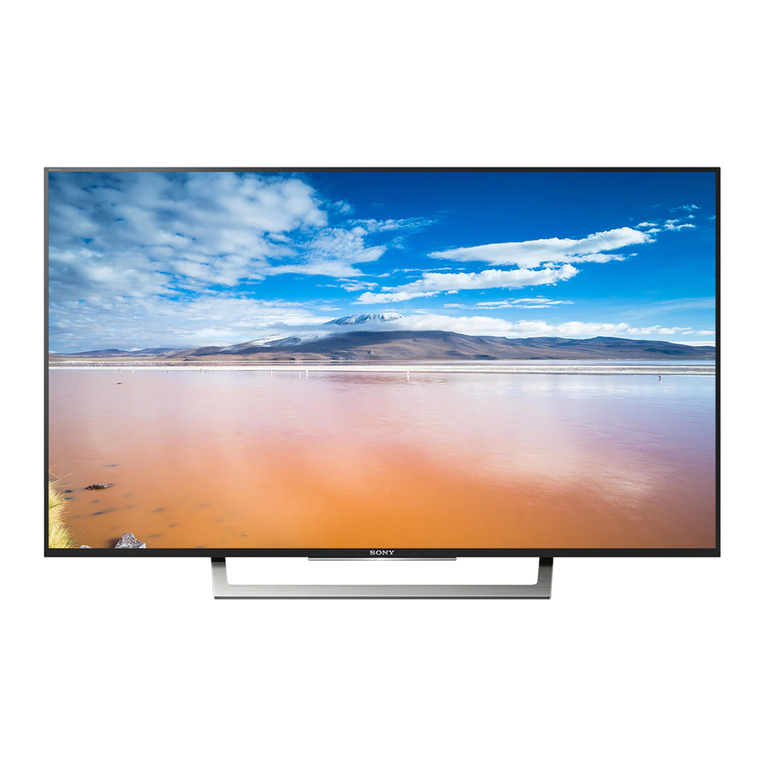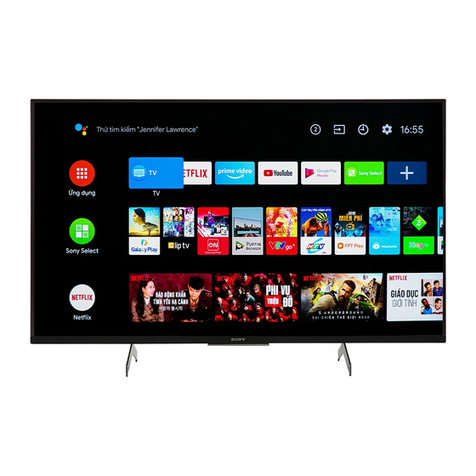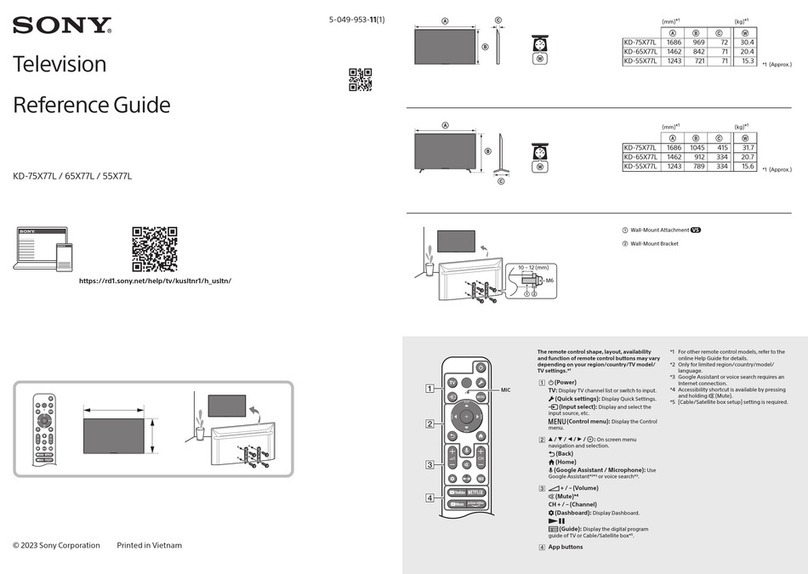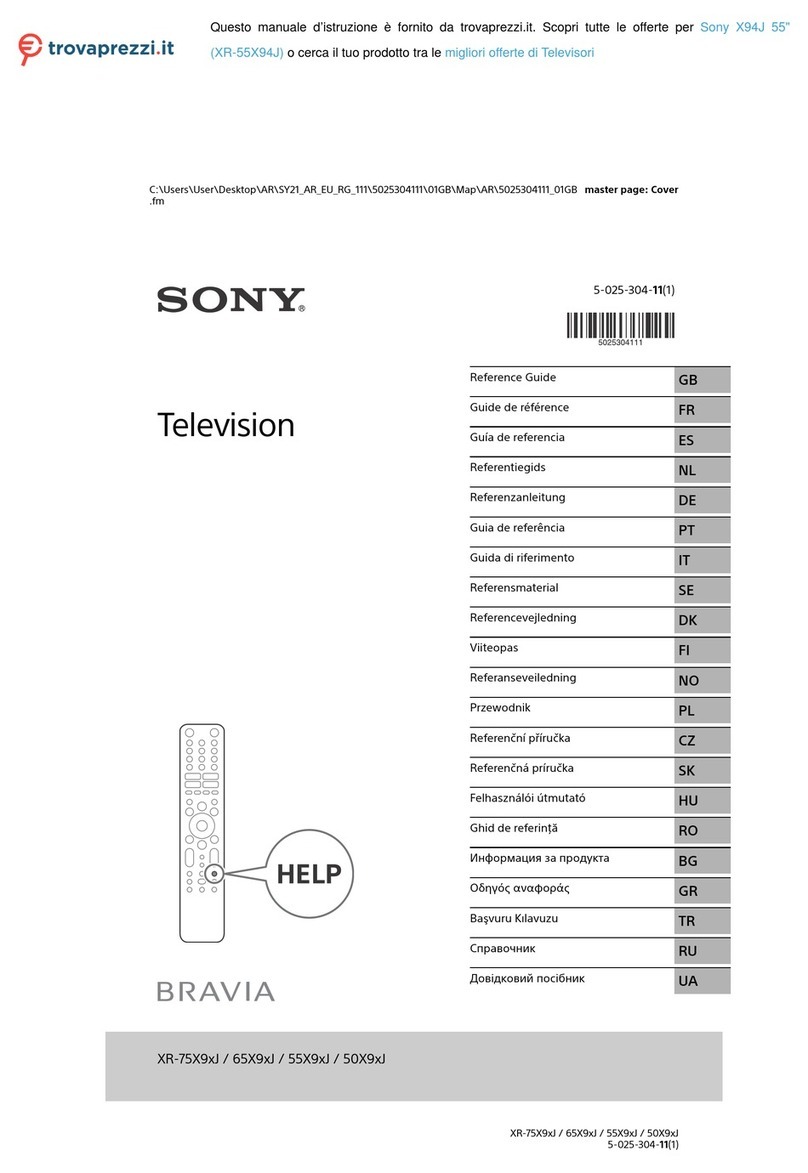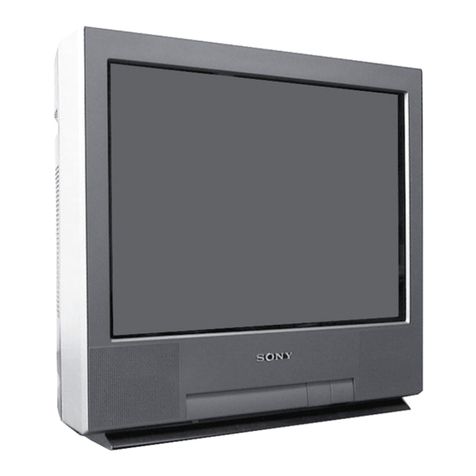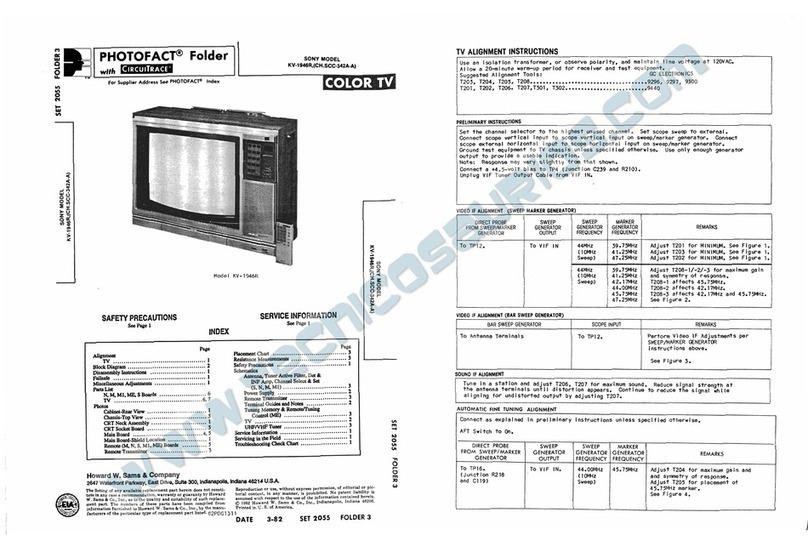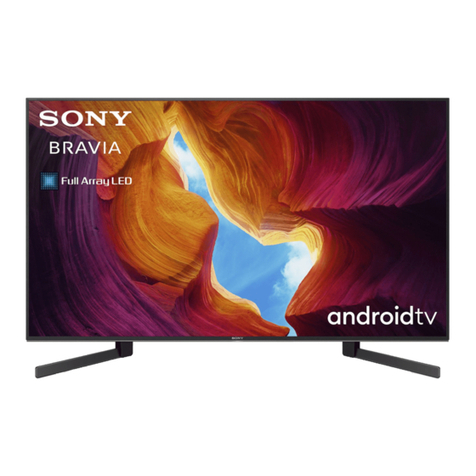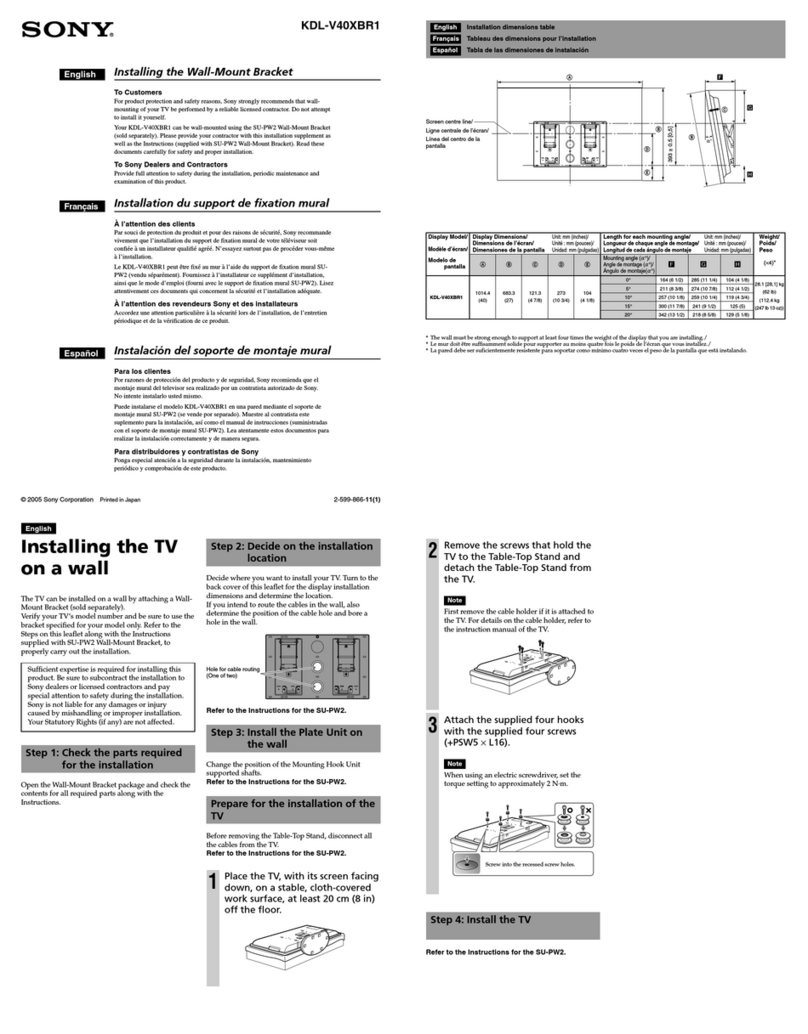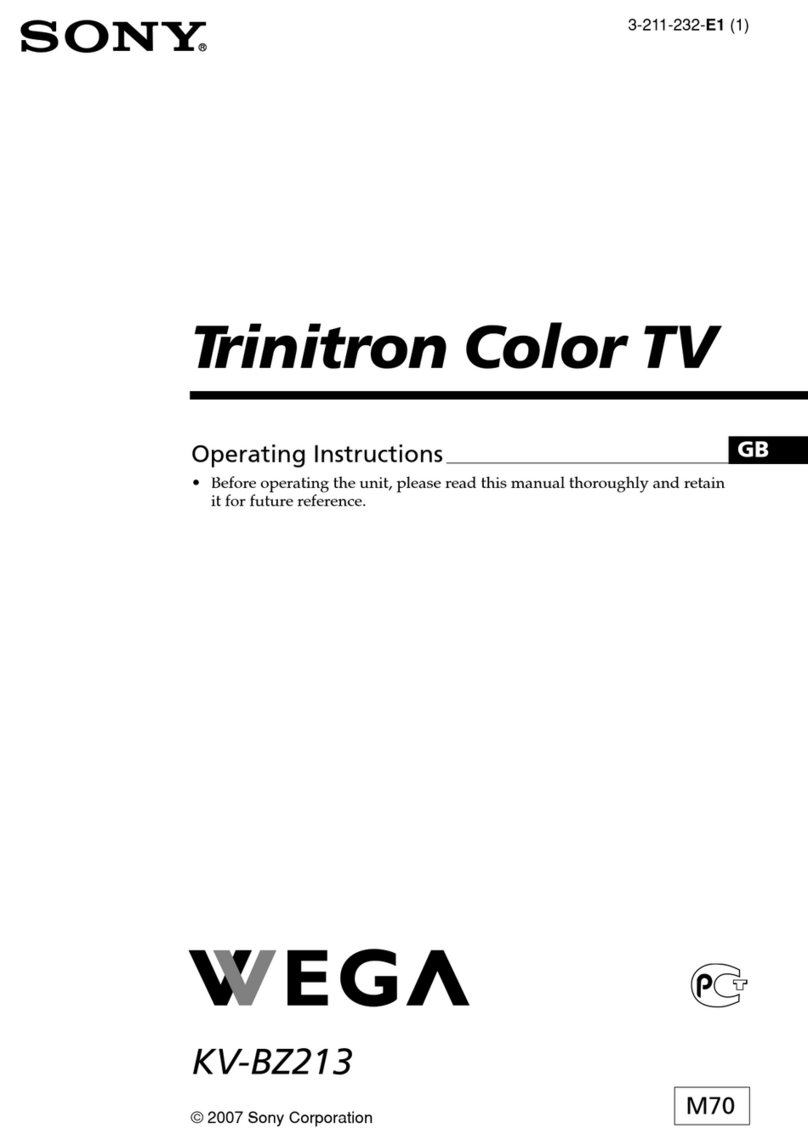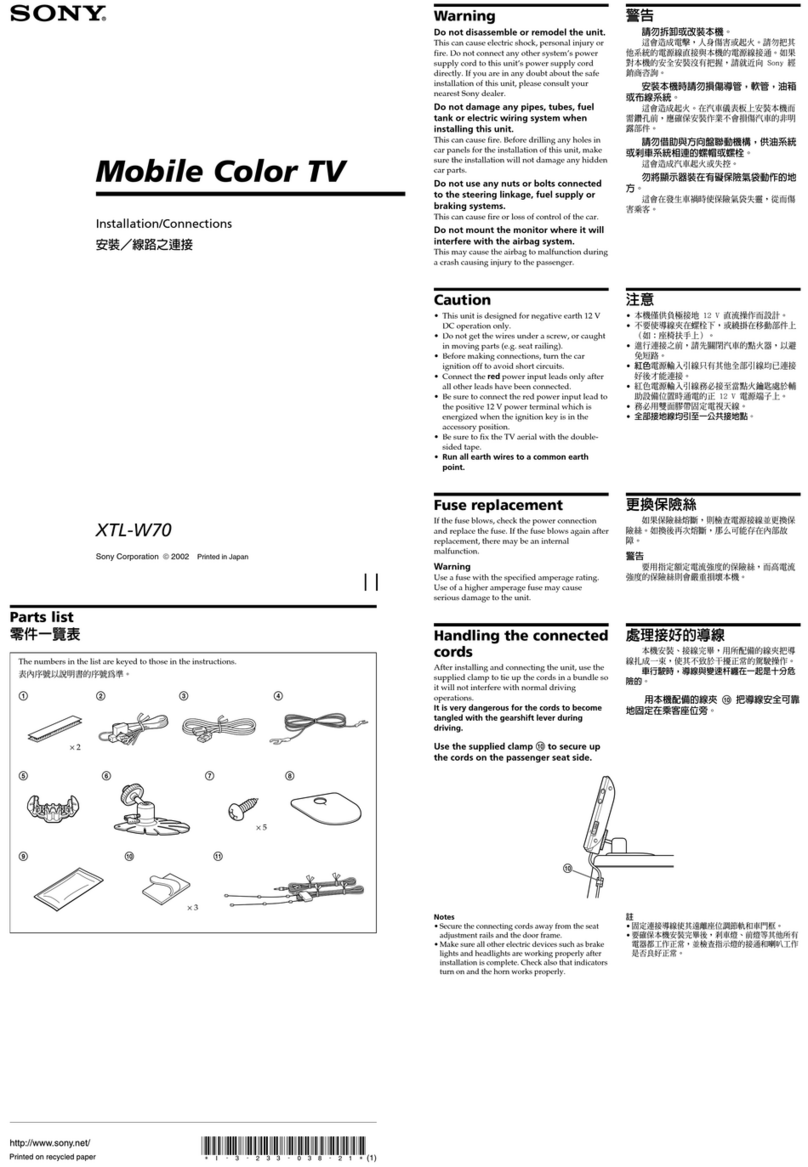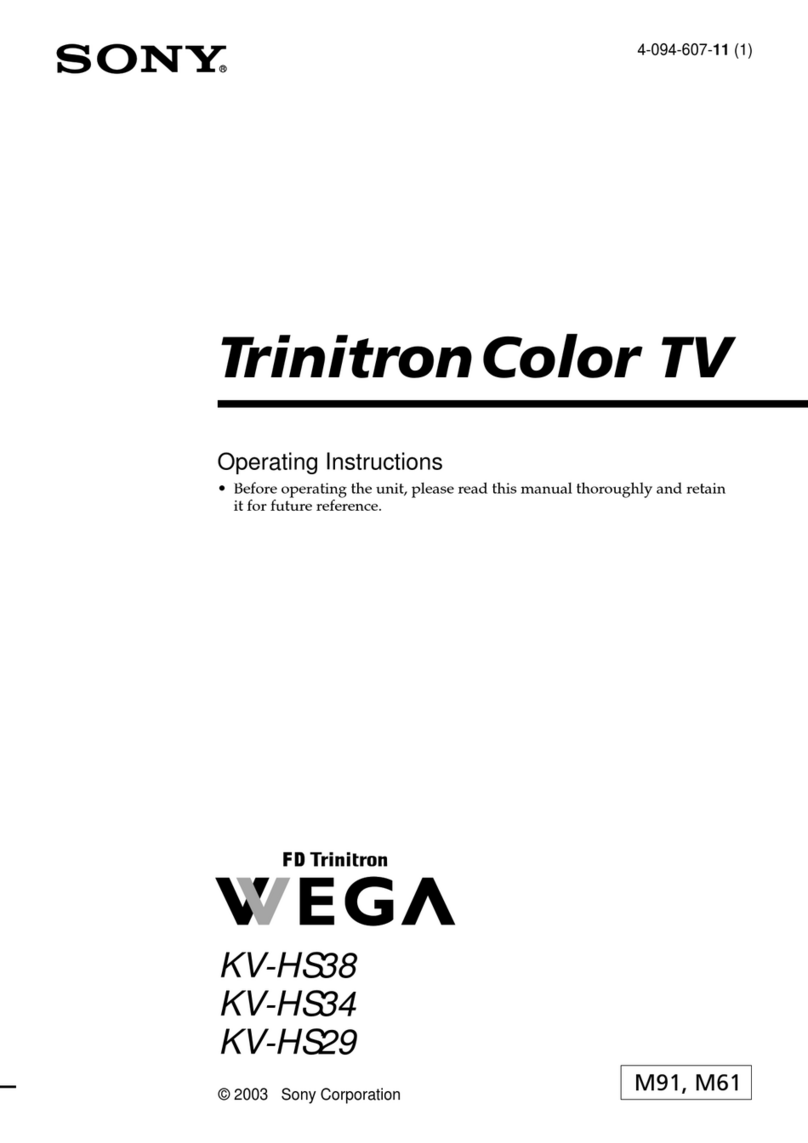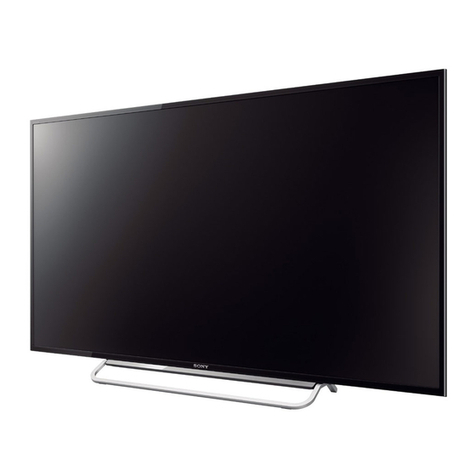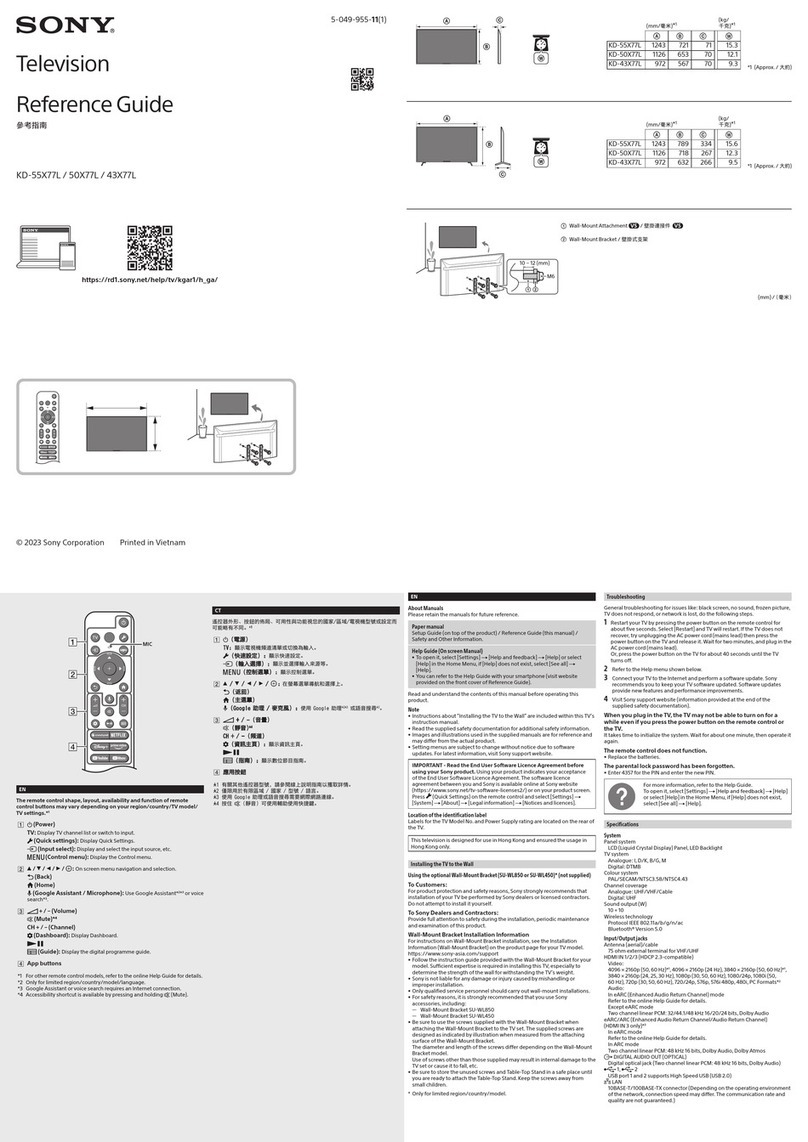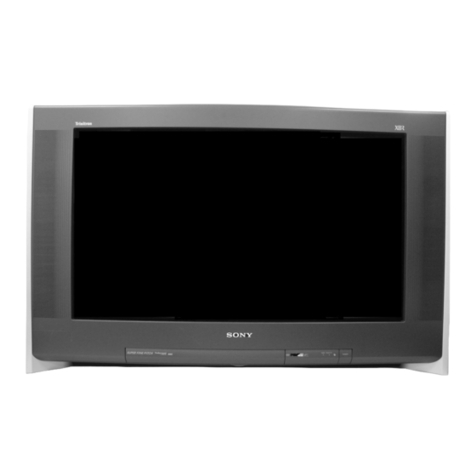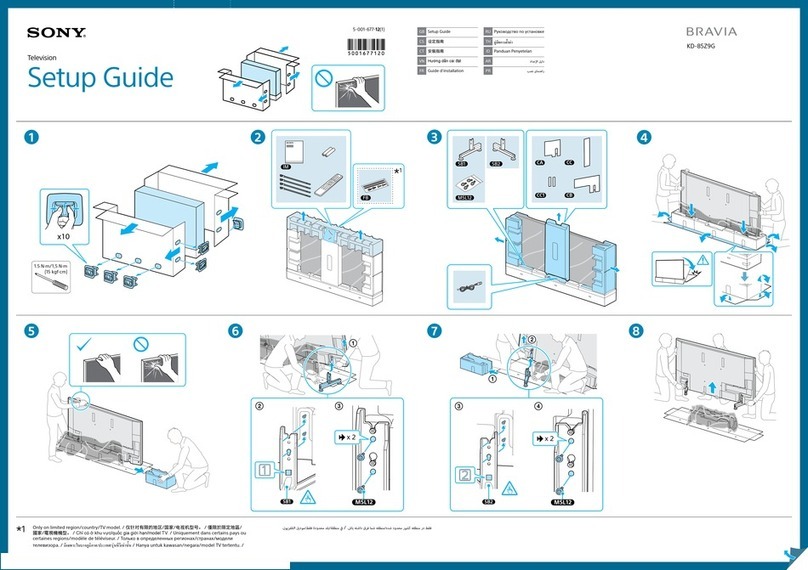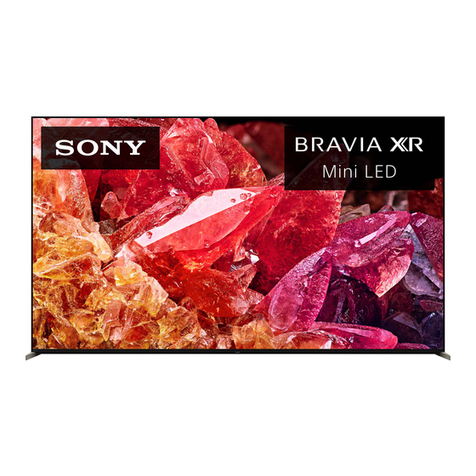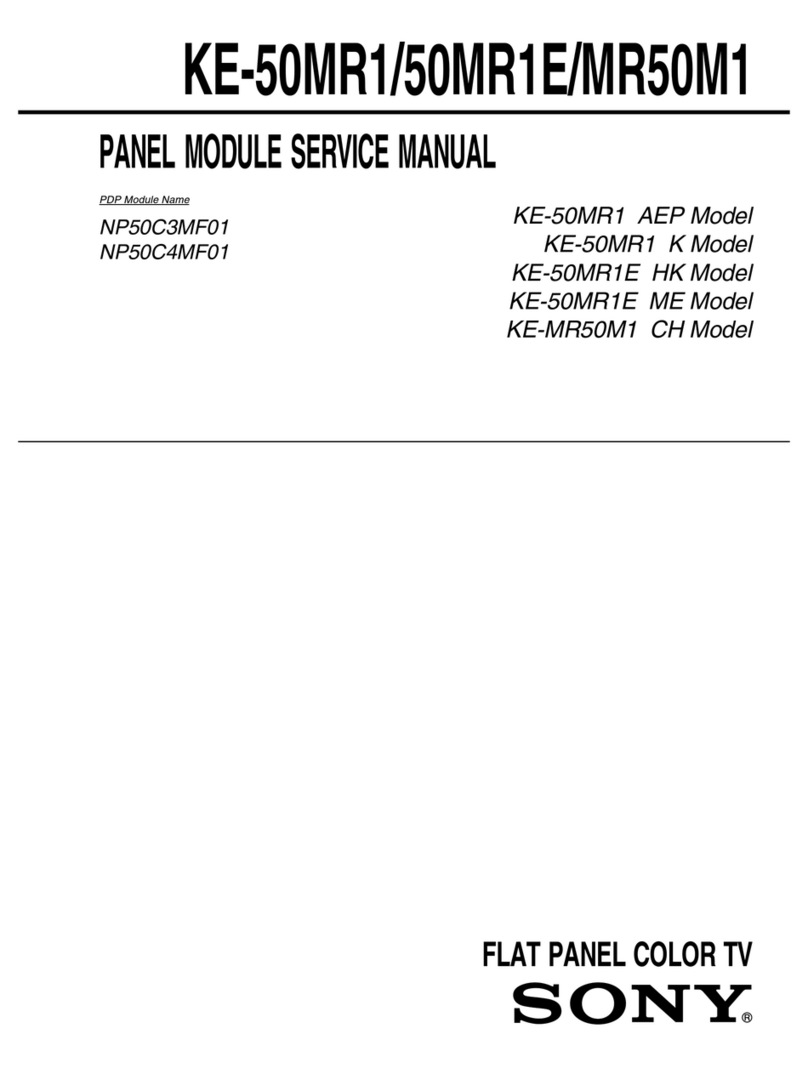
– 3 –
KV-AR29M90
RM-993
TABLE OF CONTENTS
SELF DIAGNOSTIC FUNCTION ........................................4
1. DISASSEMBLY
1-1. Rear Cover Removal ................................................... 7
1-2. Speaker Removal ........................................................ 7
1-3. Chassis Assy Removal ................................................ 7
1-4. F Board Removal ........................................................ 7
1-5. Service Position .......................................................... 7
1-6. Terminal Bracket and J Board Removal .................... 7
1-7. D3 Board Removal ..................................................... 8
1-8. B1 Board Removal ...................................................... 8
1-9. H1 and H2 Boards Removal ....................................... 8
1-10. A and B10 Boards Removal ....................................... 8
1-11. Picture Tube Removal ................................................. 9
2. ADVANCE OPERATION
2-1. "RESET" Function .................................................... 10
3. SET-UP ADJUSTMENTS
3-1. Beam Landing ........................................................... 11
3-2. Convergence .............................................................. 12
3-3. Focus Adjustment ..................................................... 14
3-4. G2 (SCREEN) and White Balance Adjustment ....... 15
4. CIRCUIT ADJUSTMENTS
4-1. Adjustment With Commander .................................. 16
4-2. Adjustment Method .................................................. 16
4-3. Adjustment for Non Digital Texture Enchancer
(DTE) Model ............................................................. 24
4-4. Adjustment for Digital Texture Enchancer
(DTE) Model ............................................................. 24
4-5. Display Position Adjustment .................................... 25
4-6. Deflection Adjustment .............................................. 25
4-7. Picture Distortion Adjustment .................................. 26
Section Title Page Section Title Page
5. DIAGRAMS
5-1. Block Diagram .......................................................... 27
5-2. Circuit Boards Location ........................................... 29
5-3. Schematic Diagram ................................................... 30
(1) C6 Board Schematic Diagram ............................ 31
(2) A Board Schematic Diagram .............................. 33
(3) B10 Board Schematic Diagram .......................... 37
(4) B1 and D3 Boards Schematic Diagrams ............ 39
(5) F and VM1 Boards Schematic Diagrams ........... 41
(6) H1 Board Schematic Diagram ............................ 43
(7) J Board Schematic Diagram ............................... 45
(8) H2 Board Schematic Diagram ............................ 46
5-4. Voltage List and Waveforms ..................................... 48
5-5. Printed Wiring Boards and Parts Location ............... 53
5-6. Semiconductors ......................................................... 61
6. EXPLODED VIEWS
6-1. Speaker Bracket ........................................................ 62
6-2. Chassis ...................................................................... 63
6-3. Picture Tube .............................................................. 64
7. ELECTRICAL PARTS LIST......................................... 65
OPERATING MANUAL
